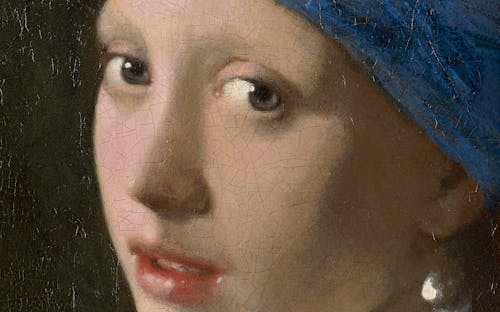Oculi Mundi
By pushing the boundaries of design patterns, creativity and technology, we created an immersive 3D experience together with Fabrique to present the ancient world maps, atlases and celestial maps from The Sunderland Collection: Oculi Mundi.
The Sunderland Collection comprises more than a hundred exquisite objects from the 13th to the early 19th centuries. Featuring world and celestial maps, atlases, books of knowledge and globes, the collection is a unique curation showcasing the evolution of knowledge, as well as a striking celebration of human exploration, discovery, and wonder. Founded over 30 years ago by by avid traveler Dr Neil Sunderland, the collection is based in Switzerland but aims to be accessible from around the world. Online, that is.
New presentation form for art collections
That goal goes further than making the collection accessible via a standard website. The ambition is to offer an innovative, inspiring and visually overwhelming online experience. In short: digital storytelling on steroids. Then we are all ears! After seeing our work for Rijksmuseum, The Sunderland Collection turned to us to create a new platform on which the art collection can be presented and experienced online: Oculi Mundi, the eyes of the world.
"We brought together a team of incredible digital pioneers to really push the boundaries of what is possible in the digital environment, and create a genuinely inspiring destination."
Helen Sunderland-Cohen, client
Innovative concept
So, the bar was high: creating a completely new public representation of 3D objects with an unusual, highly immersive web experience. For this project we challenged ourselves to create a truly innovative concept. The first designs from design partner Fabrique blew us away: a 3D-like environment that allows visitors to wander through the beautiful collection with a spatial way of navigating. We needed multiple proof-of-concepts to see if these ideas would even be technically feasible.
The Collection part on oculi-mundi.com
Scrolling through space
The idea behind the website is that each part is a 3D-like world. To provide an overview of these different components, say: the menu, we created a space with globes through which visitors can scroll. The 'Collection' section is the heart of the platform and contains maps and atlases that float towards you as you scroll. In this overview, visitors can click on the individual items to view them up close. The beautiful atlases with many maps posed a particular challenge: we ultimately implemented the idea of a spatial experience for these books as a floating 3D carousel including a slider to allow visitors to browse in different ways.
The presentation of an atlas on oculi-mundi.com
We have also applied this spatial experience to other parts, such as the 'References'. Here you can find information about people who made the maps and atlases. To give this part a 3D effect, we decided to let the entries float in space like cards above a 3D globe. As the visitor scrolls, the cards move towards him along that sphere. Like other parts of Oculi Mundi, getting this animation to run smoothly was quite a challenge!
Testing with end users
Hardly any page of Oculi Mundi has become standard. Because of the unusual navigation, it was questionable whether users would understand it. That's why it was necessary to do a lot of testing. We did this during several of our in-house test days.
Fortunately, we received very positive reactions. In addition, points for improvement in terms of navigation also quickly became clear. After the tests, for example, the custom cursor that we specially devised for Oculi Mundi was added. The cursor hints at certain interactions to establish familiarity. For example, when the user hovers over an item, the cursor becomes larger. If the item is a link to another 3D environment, the cursor expands and a plus sign appears.
Exploration Mode
While the transformations and 3D effects are visually stunning, not all users will benefit from this exploratory interface. For example, researchers want to easily find specific maps and collect as much information as possible. To accommodate them, we have added a research mode to the website. This mode provides the same information as the exploration mode. But where the latter immerses the user in the world of Oculi Mundi, research mode offers more information on a screen and more functions such as sorting. It also displays the collection in a more familiar grid format.
Further development
Oculi Mundi is designed with continued development in mind. In a next phase we added new functionality for exhibitions. This is also designed as a spatial experience, where a visitor can navigate through different 3D spaces. Like a physical exhibition but without walls. These exhibition spaces can be set up modularly in the CMS, so that the content team can easily create and expand online exhibitions.
"Just as The Sunderland Collection celebrates the explorers, makers and thinkers who came before, with Oculi Mundi we strive to reach for the future by embracing innovation, fostering scholarship, and providing a platform for ideas."
Helen Sunderland-Cohen, client





